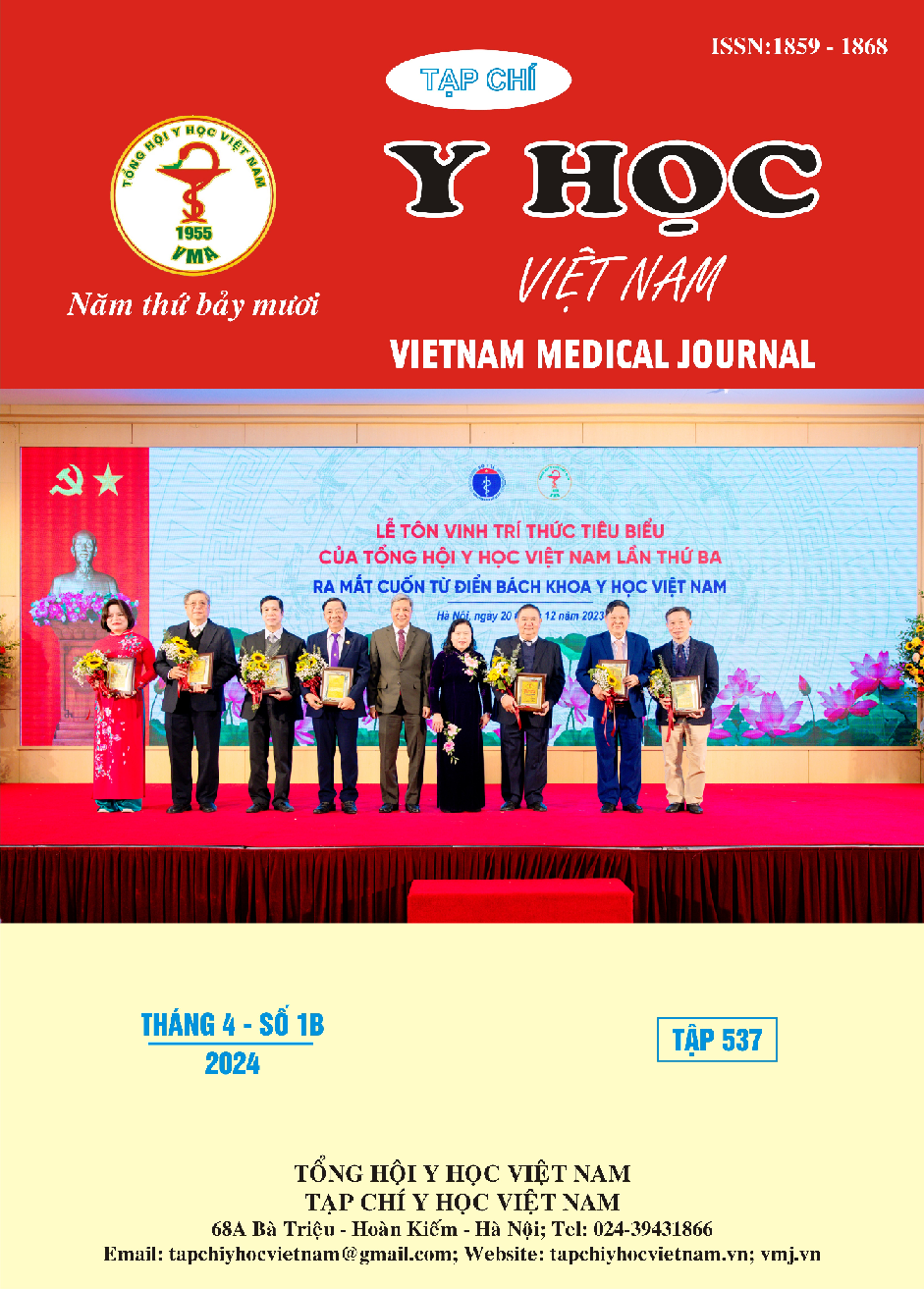NHẬN XÉT CÁC PHƯƠNG PHÁP PHẪU THUẬT ĐIỀU TRỊ BỆNH NHÂN KHUYẾT HỔNG PHẦN MỀM SAU CẮT BỎ KHỐI U VÙNG MẶT
Nội dung chính của bài viết
Tóm tắt
Mục tiêu: Nhận xét các phương pháp phẫu thuật điều trị bệnh nhân khuyết hổng phần mềm sau cắt bỏ khối u vùng mặt tại Bệnh viện Hữu nghị Đa khoa Nghệ An. Đối tượng và phương pháp nghiên cứu: Thiết kế nghiên cứu mô tả cắt ngang trên 34 bệnh nhân có tổn thương khuyết hổng phần mềm vùng mặt sau cắt bỏ khối u được tạo hình bằng vạt tại chỗ. Kết quả: Vạt dồn đẩy được sử dụng nhiều nhất (55,88%), tiếp theo là vạt đảo (20,59%), vạt xoay (14,71%), và Vạt trục mạch (8,82%). Vạt dồn đẩy được sử dụng đa số khuyết hổng phần mềm có độ khuyết sâu với vùng má vùng má (7 trường hợp và vùng mắt (8 trường hợp); Vạt trục mạch chỉ được sử dụng ở vùng mũi có nền tổn khuyết sâu xuống niêm mạc 3 trường hợp; vạt đảo có 4 trường hợp khuyết sâu diện tích trên 3cm2 vùng mũi sử dụng vạt rãnh mũi má dưới dạng trục mạch cuống phía trên, 3 trường hợp còn lại sử vạt rãnh mũi má dưới dạng trục mạch cuống phía dưới cho vùng môi khuyết hổng có diện tích nhỏ hơn 1cm2; Có 5 vạt xoay trong đó 3 khuyết hổng vùng má và 2 khuyết hổng vùng mắt kích thước vạt từ 1-3 cm2 là 3 trường hợp, trên 3 cm2 là 2 trường hợp. Kết luận: Vạt dồn đẩy được sử dụng nhiều nhất trong phẫu thuật tạo hình cho các bệnh nhân bị khuyển hổng phần mềm vùng mặt. Sử dụng các vạt tại chỗ đem lại hiệu quả cao trong việc tạo hình che các khuyết hổng cho bệnh nhân.
Chi tiết bài viết
Từ khóa
Phương pháp phẫu thuật, bệnh nhân khuyết hổng phần mềm vùng mặt.
Tài liệu tham khảo
2. Bạch Minh Tiến (2002), Luận văn thạc sỹ y học, ”đánh giá kết quả sử dụng Vạt trục mạch và vạt rãnh mũi má trong điều trị tổn khuyết phần mềm vùng mũi”, Đại Học Y Hà Nội, Hà Nội.
3. Glanz K., Schoenfeld E.R., và Steffen A. (2010). A randomized trial of tailored skin cancer prevention messages for adults: Project SCAPE. Am J Public Health, 100(4), 735–741.
4. Bùi Văn Cường (2016), Luận văn thạc sỹ y học, “Đánh giá kết quả phẫu thuật tạo hình tổn thương khuyết đầu mũi, cánh mũi”, Đại Học Y Hà Nội, Hà Nội.
5. Kwon K.H., Lee D.G., Koo S.H. và cộng sự. (2012). Usefulness of V-Y Advancement Flap for Defects after Skin Tumor Excision. Arch Plast Surg, 39(6), 619–625.
6. Dinehart S.M. và Pollack S.V. (1989). Mohs micrographic surgery for skin cancer. Cancer Treatment Reviews, 16(4), 257–265.
7. Nguyễn Quang Rực (2019), Luận văn thạc sỹ y học, “Đánh giá kết quả phẫu thuật tạo hình khuyết phần mềm kích thước vừa và nhỏ sau cắt bỏ ung thư da tế bào đáy vùng mặt”, Đại Học Y Hà Nội, Hà Nội.
8. Kalus R. và Zamora S. (1996). Aesthetic considerations in facial reconstructive surgery: the V-Y flap revisited. Aesthetic Plast Surg, 20(1), 83–86.
9. Lee K.S., Kim J.O., Kim N.G. và cộng sự. (2017). A Comparison of the Local Flap and Skin Graft by Location of Face in Reconstruction after Resection of Facial Skin Cancer. Arch Craniofac Surg, 18(4), 255–260
10. Lê Minh Tuấn (2012), Luận văn thạc sỹ y học "Nghiên cứu đặc điểm giải phẫu và ứng dụng của nhánh trán động mạch thái dương nông tạo hình đầu mặt cổ ", Đại Học Y Hà Nội.


